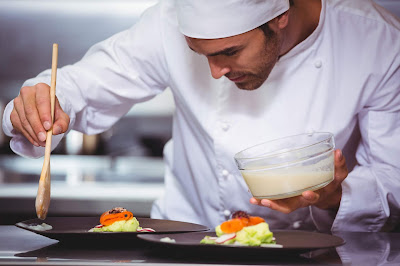Art of cooking is Culinary Art?
Culinary art is the art and science of preparing, cooking and presenting food. Crafting unique and awe-inspiring food creations that tantalizes all the senses, it is no wonder that a career in the culinary sector is growing in popularity.
Origin of Culinary Art
Culinary arts originated from ancient times where chefs labor all day in great castles to produce sumptuous, mouth-watering meals that are fit for a king, literally. With time, these fine dining gourmet meals are brought out of the castles where the classical menus are prepared, re-interpreted, enhanced and tweaked by great chefs (some of which are apprentices of the original chefs) into popular dishes that are enjoyed till today.
A well-trained chef uses his knowledge of the food ingredients as well as the basic principles of cooking to determine how to prepare a dish that can bring out even the most subtle of flavors from ingredients used or fuse different types of cuisines to create interesting fusion dishes.
Eduquest International Institute, Singapore, offers WSQ Certificate in Culinary Arts. Prospects who are looking for culinary arts will have the chance to learn all fundamentals culinary skills and follow a safe and hygienic working practice of kitchen. They will be trained in various hands-on activities in a simulated kitchen setup.
Unit 1: Follow Food and Beverage & Safety and Hygiene Policies and Procedures
- This unit covers the practice of good personal hygiene, use of safe ingredients, Handle food safely, Store food safely & maintain cleanliness of utensils, equipment and service/storage areas.
Unit 2: Maintain a Safe and Secure Working Environment
- This unit teaches learners how to maintain a safe work environment, use proper lifting, pushing and pulling techniques, use equipment safely and follow directions for handling hazardous materials.
Unit 3: Prepare Mise En Place1
- In this unit, learners will learn how to assemble ingredients and equipment, Weigh and measure ingredients, Demonstrate knife skills, Prepare pans and prepare dried, frozen and concentrated products for use.
Unit 4: Maintain Food & Beverage Production Environment
- This unit will prepare learners on how to perform end of shift duties such as how to clean food & beverage preparation equipment, floors, and mats, how to dispose of trash, how to wash pots and wares and how to maintain supplies.
Unit 5: Maintain Quality Control Procedure
- In this unit, learners will learn about how to follow quality control guidelines as well as food & beverage hygiene and safety guidelines. Learners will also learn about portion control guidelines, how to maintain quality control of food products as well as how to plate and present food.
Unit 6: Demonstrate Basic Moist Heat Cooking Methods
- This unit will teach learners the basic principles in moist heat cooking. Learners will apply the principles to poach, simmer, boil, blanch, steam, braise, and stew food.
Unit 7: Demonstrate Basic Dry Heat Cooking Methods
- This unit will teach learners the basic principles of dry heat cooking. Learners will apply the principles to roast & bake food, Broil & grill food, Pan-fry and sauté food and finally deep-fry food.
Participants who have successfully demonstrated competence in all knowledge and skills requirement will be awarded the WSQ Certificate in Culinary Arts (Awarded by SSG).
Enrol in our programmes today and be trained by our team of certified and professional trainers if you wish to join or progress in the food and beverage sector.
Click here to register for WSQ Certificate in Culinary Arts.
Click here to know our upcoming classes.




It’s always so sweet and also full of a lot of fun for me personally and my office colleagues to search you blog a minimum of thrice in a week to see the new guidance you have got.
ReplyDeletesafety course in chennai
industrial safety course in chennai
This comment has been removed by the author.
ReplyDelete